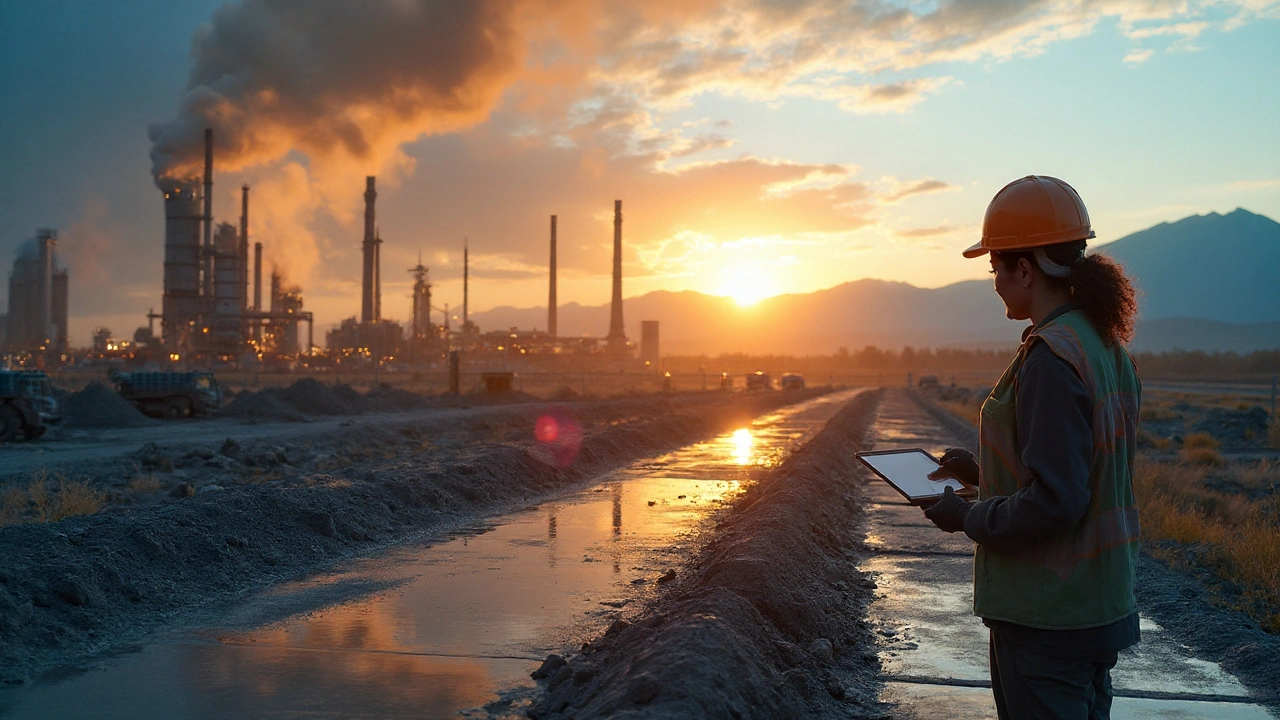Carbon Sequestration: What It Is and How It Helps
Ever wonder where the extra CO2 from factories, cars, and farms disappears? That’s where carbon sequestration steps in. In plain terms, it’s any process that moves carbon from the atmosphere and stores it for a long time. Think of it like tucking away a stray sock in a drawer so it doesn’t clutter the floor – the carbon gets tucked away, leaving the air cleaner.
There are two main ways to do this: natural and engineered. Natural methods rely on plants, soils, and oceans, which already act like giant carbon sponges. Engineered methods use technology to capture, transport, and lock carbon underground or turn it into useful products. Both routes aim to slow down the heating of our planet.
Natural Sequestration: Forests, Soil, and Ocean Power
Forests are the poster child of natural carbon storage. Trees pull CO2 from the air during photosynthesis and lock it in wood, leaves, and roots. When a forest grows, it keeps adding more carbon each year. That’s why protecting old-growth forests and planting new trees are fast wins for climate action.
Soil is another hidden hero. Healthy soil teems with microbes that turn plant residues into stable organic matter. This can keep carbon underground for decades or even centuries. Simple farming tricks – like cover cropping, reduced tillage, and adding compost – boost the soil’s carbon‑holding power without pricey equipment.
The ocean absorbs about a quarter of all CO2 we emit. Tiny plankton use it for growth, and the water itself stores dissolved carbon. While we can’t control the ocean directly, reducing pollution and supporting marine protected areas helps keep this natural sink healthy.
Engineered Sequestration: Capture, Store, and Use
Tech‑driven sequestration starts with capturing CO2 at the source – think smokestacks at power plants or factories. There are three popular capture methods: post‑combustion (scrubbing the exhaust), pre‑combustion (treating fuel before it burns), and oxy‑fuel combustion (burning fuel with pure oxygen). Each has pros and cons, but all aim to pull CO2 out before it reaches the sky.
Once captured, the gas needs a place to hide. One common tactic is injecting it deep into depleted oil and gas reservoirs, saline aquifers, or old coal mines. These underground sites are sealed off by rock layers that prevent the gas from leaking back out. Monitoring wells and sensors keep a close eye on the storage, ensuring safety.
A newer twist is turning CO2 into products we already use – like building materials, fuels, or chemicals. This “carbon utilization” gives the gas a second life and can offset the cost of storage. For example, mixing CO2 with cement can strengthen concrete while locking the carbon inside.
So, why should you care about carbon sequestration? First, it buys us time. Cutting emissions fast is essential, but some carbon is already in the air and will keep heating the planet for years. Sequestration helps pull that excess out. Second, many sequestration projects create jobs – from forest management to high‑tech engineering – adding economic benefits to the climate win.
What can you do? Support policies that fund reforestation and soil health programs. If you own land, consider planting trees or adopting regenerative agriculture practices. Even simple actions like reducing waste and choosing low‑carbon products lower the amount of CO2 you’re adding in the first place.
Carbon sequestration isn’t a silver bullet, but it’s a powerful tool in the climate toolbox. Pair it with cutting emissions, using clean energy, and changing habits, and we get a real chance to keep the planet from overheating. The more we understand and invest in these methods, the faster we can turn the tide.
Calcium Carbonate and Climate Change: Roles, Risks, and Real Solutions (2025 Guide)
- Benjamin Aghaki-Allen
- Climate & Environment
- 15 comment
Does calcium carbonate help or hurt the climate? Clear 2025 guide on cement, oceans, farming, and fixes-what really cuts CO2 and what to avoid.
VIEW MORECategories
Popular posts
-
CBT for Chronic Pain: How Cognitive-Behavioral Therapy Helps Manage Persistent Pain
Benjamin Aghaki-Allen -
Viagra Gold vs Alternatives: Which ED Medication Works Best?
Benjamin Aghaki-Allen -
Look-Alike, Sound-Alike Medication Names That Cause Errors: How Confusion Leads to Harm
Benjamin Aghaki-Allen -
Aricept (Donepezil) vs Alternatives: A Practical Comparison Guide
Benjamin Aghaki-Allen -
Emphysema Stages Explained: A Complete Guide for Patients and Caregivers
Benjamin Aghaki-Allen
Popular tags
- side effects
- online pharmacy
- medication safety
- dietary supplement
- gut health
- blood pressure medication
- alternatives
- generic drugs
- dosage
- weight management
- quality of life
- cheap generic Zoloft
- affordable sertraline
- ED medication comparison
- Tadalafil
- comparison
- medication adherence
- therapeutic equivalence
- Hatch-Waxman Act
- generic vs brand
